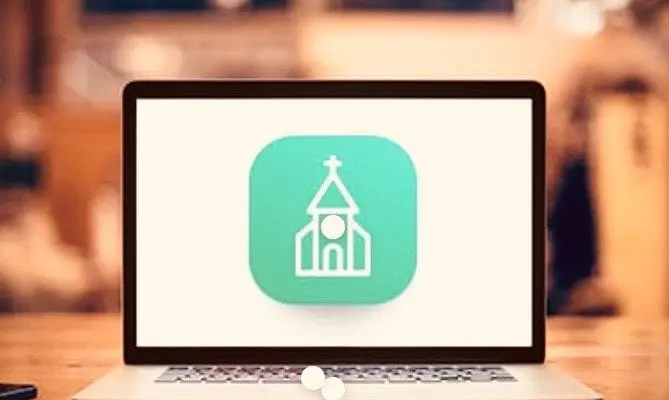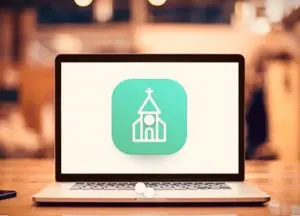
A reflection on worshipping remotely, evangelism, and how we count it
By Janet Marshall
Over the past few weeks, we’ve seen an impressive burst of creativity as we learn new ways to worship, pray, teach and share the gospel online. Responses to the COVID-19 pandemic have been impressive, to say the least. We are streaming, live streaming and Zooming, and while it feels like a new world for us, we’ve actually been fast tracked into a future we knew was coming.
Now that we’re here there’s no going back, so it’s worth looking at the sorts of interactions and relationships we’re creating through our online presence. It’s great that there are so many more people who can see us, but what is the potential for evangelism? How do we invite people to engage with us? And how can we move from engagement to relationship: from online to in-person once we can gather again?
 Also, we like to count things. We use quantitative measures such as average Sunday attendance (ASA) and average weekly attendance (AWA) to track congregational sustainability and growth. It’s no surprise that there are lively questions about how to count our virtual interactions.
Also, we like to count things. We use quantitative measures such as average Sunday attendance (ASA) and average weekly attendance (AWA) to track congregational sustainability and growth. It’s no surprise that there are lively questions about how to count our virtual interactions.
I want to begin by saying unequivocally: virtual liturgies count. Online interactions are real and can be very meaningful. We are reaching people and showing our presence and response in this time of anxiety. We are touching lives. The question is how we understand the nature of these encounters given the different media being used.
There are basically three different methods being used for online worship: streaming a pre-recorded liturgy; live streaming; and using a video conference platform such as Zoom.
Streaming a pre-recorded liturgy is most like a performance. We can record lots of “takes” to get it just right so that people can see us at our best. Liturgy legitimately has an element of performance, and some very popular churches are highly performative, as are many Protestant traditions. I remember going back to the Presbyterian church of my childhood and youth after I had been attending an Anglican church for a few years and being very surprised by how little there was for the congregation to say.
Pre-recoding allows us to make the best impression possible. The investment in the interaction is primarily ours. The audience has the privacy to come and go, linger a bit or engage, have it on in the foreground or background as they choose. This is window-shopping evangelism. The gift is in the potential for a very large number of people to come into contact with the video as they scroll through Facebook. It is a ministry of witness and presence that shows how we worship, who we worship, how we pray and who we pray for. This is a significant and new opportunity for evangelism that is bearing fruit as we see the number of views being recorded on our Facebook pages or YouTube channels.
However, any counting we do is, on the surface, going to be widely inaccurate. Some people will give us a fly-by “like,” some will linger, some will watch the entire liturgy. We can collect the number of likes and, more significantly, we can count the of the number of people who leave comments. Most significant is how often the video is shared. By sharing a video on their own Facebook page, someone has chosen to align themselves with this liturgy. Sharing it with their network of friends is a form of virtual evangelism saying, in effect, “this is meaningful to me and I want you to see it too.”
If we delve a little deeper, Facebook and YouTube will show us the average watch time and audience retention for each video, so we can see real data about how people are engaging with our worship. Churches that post pre-recorded liturgies can also use the Premiere functions on Facebook or YouTube to mimic a live experience, inviting people to tune in and watch at the same time, and unlock more data.
Live streaming introduces spontaneity and the potential for imperfection. Again, worship is essentially performance. The audience may be onlookers, or they may engage; they can stay or come and go. They may stumble upon our worship as they scroll through their newsfeed. But with live streaming, sometimes microphones don’t work properly, you can hear the cleric’s children in the background, things can and do go wrong. This risk adds an element of intimacy that invites the onlookers into the experience. Watching, we feel empathy, humour and frustration, and this engages us. It feels more personal.
Churches that live stream on Facebook usually allow live comments and reactions as people tune in to watch. This invites people to feel like they’ve become part of a group who are having a shared experience. They move from being an onlooker to being part of a virtual community – if only for a short time. Through the comments people can offer their prayers and share the Peace in real time during the liturgy. Other pages and individuals can also host Watch Parties, inviting their friends or followers to join them in the live viewing experience.
This is like window shopping evangelism where the door is open and there are ways that you are invited to enter. You can step in just a little bit by making a comment, or you can come right in by joining the party or, in this case, the virtual congregation.
Similar to pre-recorded streaming, any counting we do is going to be inaccurate, but we can count “peak live viewers” – the number of people who actually tuned in live – and audience retention, and be more confident of people’s engagement in worship. So, along with the views, shares and number of people commenting, it’s worth counting and keeping track of these numbers.
Zoom or another video conferencing platform is a way of keeping in touch with the congregation and tending the community. This is a walled-garden approach. People need to have the link to enter and, once in, can interact with each other; they can see each other, hear each other and, through the chat, write notes to each other.
In a Zoom liturgy, people are treated as participants. Engagement is supported with a downloadable bulletin attached with the link. You’re invited to say the responses and sing the hymns. During worship, the chat function can be used to share prayers and the Peace, or the mics can be turned on. After worship ends, churches will often have a virtual coffee hour and check in with each other. The officiant can speak directly to the group, sharing community news and facilitating interactions.
Compared with streaming on Facebook or YouTube, the reach to the public is limited. The focus is on engaging with the liturgy, fostering personal interactions and nurturing relationships within the congregation while it can’t meet in person. Zoom links can be shared on parish social media feeds, but people will need to follow the link to enter the service. Counting is therefore easier but not entirely accurate. You can count the number of log-ons, but you won’t get an exact count since there are couples and families participating from a single device. This being said, it’s the closest we can get to ASA and AWA counts.
Unexpectedly, parishes offering Zoom services are finding that participation in daily prayer is high – much higher that they would expect from in-person gatherings. These prayer services are providing structure to people’s days – something to look forward to and be part of every weekday. This is a particularly important ministry for people who are struggling with isolation and are at risk with mental health issues.
Even though there is a doorway to these Zoom gatherings, evangelism is happening through people inviting their friends. Like the invitation to a Watch Party, inviting a friend to a Zoom worship service is clearly easier than making the invitation to in-person worship in our churches. Through our virtual worship, gossiping the gospel is flowering.
Expanding and enhancing the experience
Our goal should be to use these media to offer window shopping, an open door, and an invitation to stay a while and engage in the experience of worshipping God as part of a community – even at a distance. No single virtual tool will do all of this, and no cleric can do all three (planning and leading just one is a lot of work), but each offers a piece.
The opportunity is to develop whichever media you’re using so that it leads from onlooking to engaging, interaction to relationship. Here are some suggestions to enhance the experiences so that people are invited to linger and participate in the spiritual experiences we’re offering.
- Have a host who is not the officiant when live streaming or Zooming. When live streaming, the host can watch the comments and respond to prayer requests in real time. With Zoom, a host can monitor the participants, make sure that video cameras and microphones are turned off and on at appropriate times and, if necessary, block intrusive participation. They can share their screen and sound to display pictures and play music.
- Keep it short. Sunday morning liturgies should be 30 minutes at the maximum unless you are offering a fully professional video with multiple officiants and live music. Even five minutes of focused prayer each weekday can be a very attractive offering for people to look forward to.
- Include other voices in the reading and prayers. With Zoom it’s easy to include people from their homes.
- Choose inviting settings for daily offices or prayer services. Record in more relaxed, casual or personal settings, such as your home or outdoors.
- Add a brief thought for the day. Reflect briefly on the gospel – five minutes or less – connecting to our experience of living through this pandemic.
- Link a bulletin to the posting or invitation. Include information about your church and highlight the ministries of outreach and pastoral care.
- Expect people to join in the prayers and sing the hymns.
- Introduce yourself and your parish. Add some personality; give people an impression of you and the church you’re representing. At either the beginning or end of the liturgy, greet the onlookers and wish them well. Let people know of your church’s website and highlight an outreach or community service of your parish or the diocese.
- Invite financial support. Let people know how they can contribute to the ministry and mission of the church. Don’t be shy! We’re hearing stories of people asking how they can contribute after watching an online service.
Finally, keep track of your stories and your counts. These experiences are worth keeping. Virtual church and the use of online media for evangelism, worship and community-building are with us to stay. It seems obvious that now we’ve entered this new environment – and are seeing how many people are being touched by our churches’ presence and witness – we must continue. Let’s learn as much as we can and share what we’re learning.
Janet Marshall is the Diocese’s Director of Congregational Development.